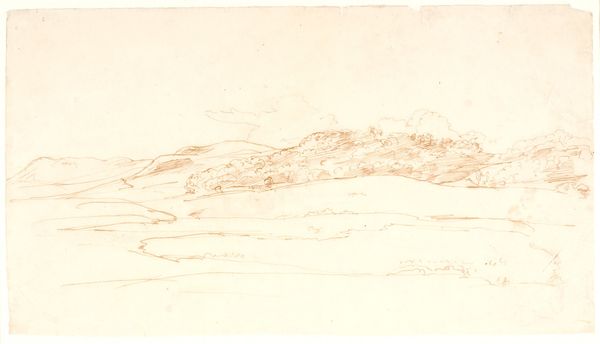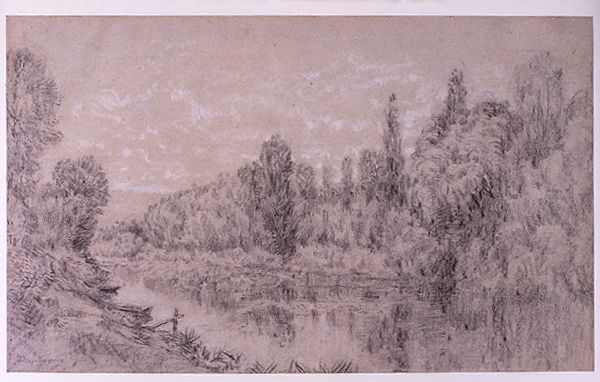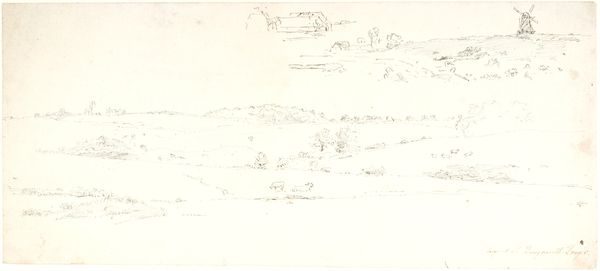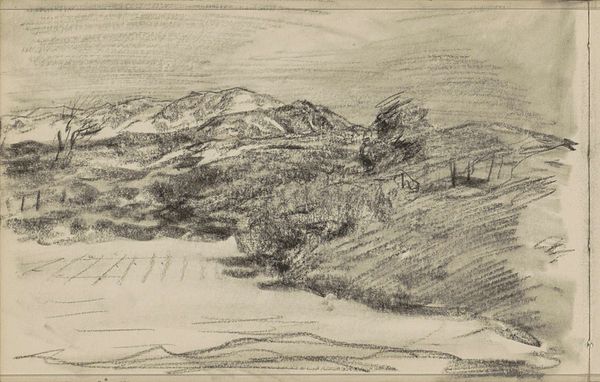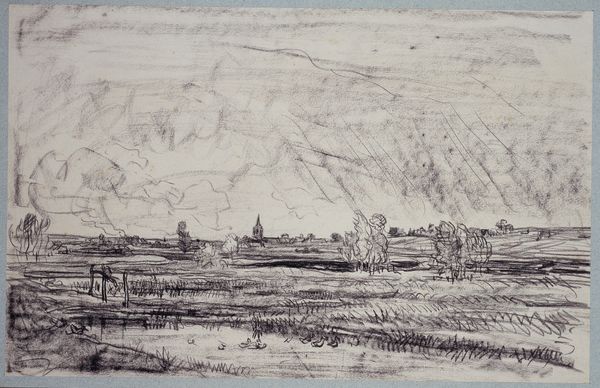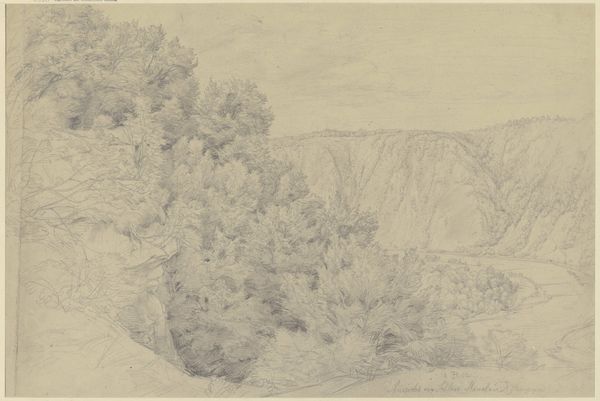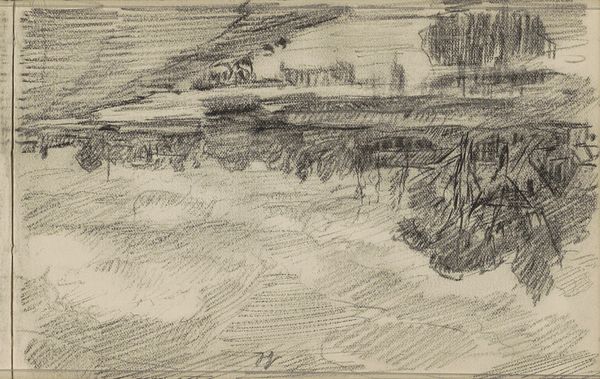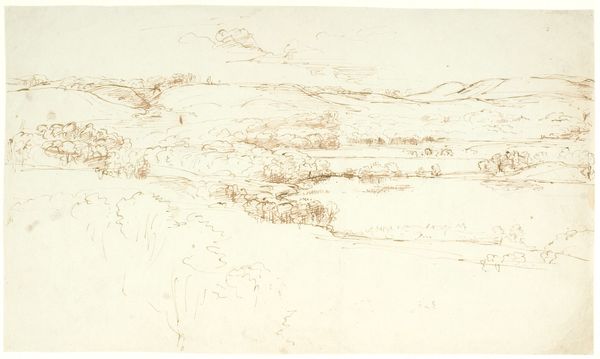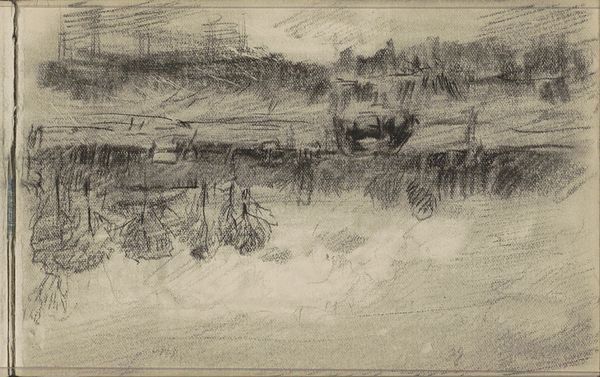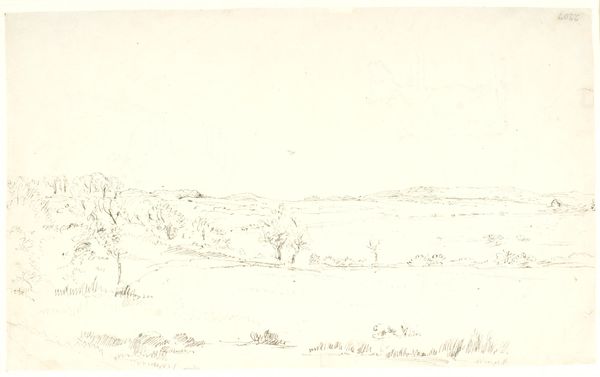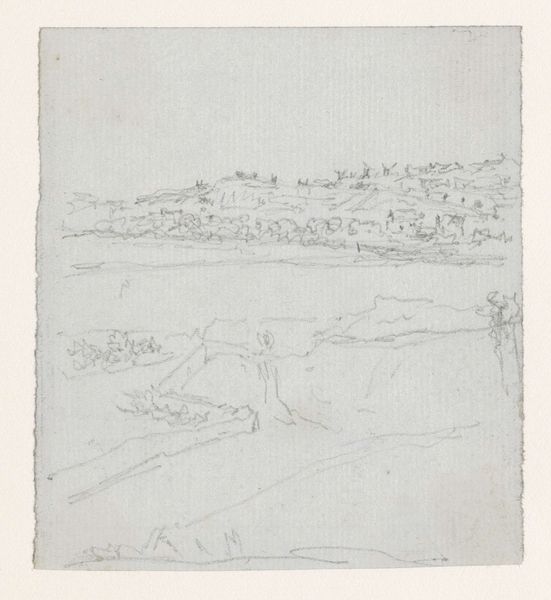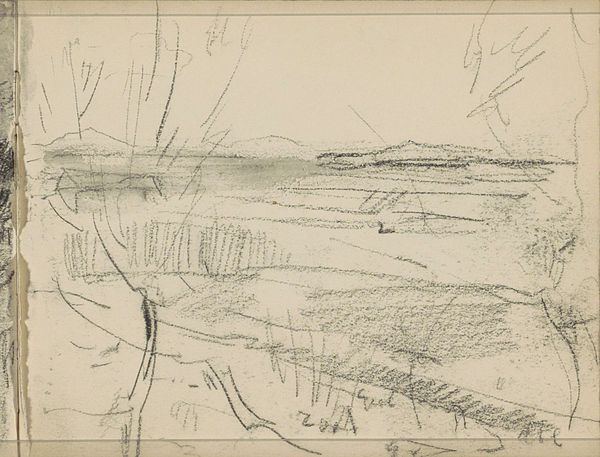
drawing, paper, pencil
#
drawing
#
landscape
#
paper
#
romanticism
#
pencil
Dimensions: 6 9/16 x 8 3/8 in. (16.67 x 21.27 cm)
Copyright: Public Domain
Curator: This wispy pencil drawing from 1825, called “Village in a Landscape”, comes to us from the hand of Théodore Rousseau, now part of the Minneapolis Institute of Art's collection. Editor: There's something quite haunting about this piece, despite its tranquil subject. The light blue paper and the delicate pencil strokes give it a dreamlike, almost melancholic feel. Curator: It does possess a quality common in Romanticism—a sense of idealized past, perhaps? It seems like Rousseau is less interested in literal transcription and more with capturing a mood, evoking nostalgia for simpler times. The village nestled within the landscape symbolizes a harmonious relationship between humanity and nature, which was a common theme in that era. Editor: And those tightly packed trees… they're drawn so densely it’s like they're whispering secrets. I see the way he’s obscured parts of the village— perhaps to show nature’s subtle reclaims of our place. It adds to that slightly unsettling beauty I noticed at first. I wonder, were these forests associated with folklore where it was painted? Curator: Rousseau belonged to the Barbizon school and such observations may be accurate. Forests in European folklore carry layers of symbolic weight, as both places of refuge and peril, where societal norms dissolve. Depicting the village through them emphasizes the villagers relationship to nature, perhaps more than civic belonging. Editor: So the village isn't just in the landscape, it's integrated with it. We think about progress as an act of taming the landscape for progress. So seeing this harmony as an integrated cultural whole would make Rousseau almost prophetic? Curator: Perhaps. The rise of industrialization certainly shaped art. Even within Romanticism, artists were concerned with depicting their natural relation with the cultural environments. Rousseau presents an idealized version here. A memory rather than documentation? Editor: Maybe. But that's what makes it so compelling, this glimpse of something perhaps already lost, viewed through the lens of beauty. Thanks for the illumination. Curator: Likewise. Thinking about visual cultural history has me looking at Rousseau's forests with renewed appreciation for nature and memory, and the power of landscapes that contain both.
Comments
No comments
Be the first to comment and join the conversation on the ultimate creative platform.
